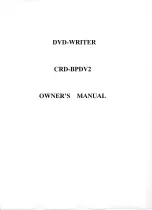
68
SANTERNO
USER MANUAL
By setting HMI function “control mode”, users can turn on and turn off the
SINUS MV
VFD by different modes; by
setting “set mode”, users can set
SINUS MV
VFD frequency by different ways, see table 5-1 function parameter
setting. The free combination of control modes and set modes makes the
SINUS MV
VFD easy for operation and
flexible.
The basic control modes include local control, remote control, upper control these three control modes, and
remote control includes level mode and pulse mode; set mode includes local set, analog set, DI set, and upper
set these four set modes. No matter how to set control mode and set mode, the emergency operation signals
are always effective, as follows:
● Cabinet door high voltage break button
●Interface board emergency stop signals (XS1T-1,8 terminal)
●Interface board remote reset signals (XS1T- 1,3 terminal)
● Interface board high voltage break section signals (XS2T-1,9 terminal and XS2T-1,10 terminal, any one closed
valid)
This chapter describes some of the complex applications and features of the
SINUS MV
standard
MV VFD.
The main contents of this chapter including:
1.The combination of control mode and set mode
2.Closed Loop Operation
3.Synchronizing Transfer Switch
4.Rotating Speed Start
5.MV Loss Process
6.Instantaneous Power Loss Function
7.Torque Lifting
8.System Bypass Function (recommended)
9.Master-slave Control
10.Low frequency oscillation restrain
11. Motor over load protection
12.VFD speed loss prevention function
13.Automatic output voltage adjustment (AVR)
14.Cell bypass and neutral point drift
Chapter 6
Function Application
6.1 The Combination of Control Mode and Set Mode
















































